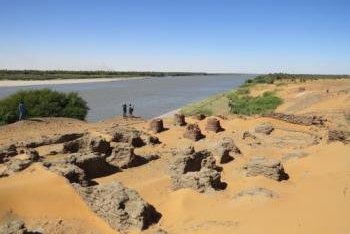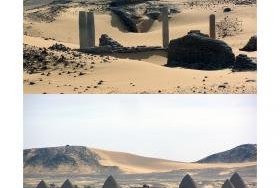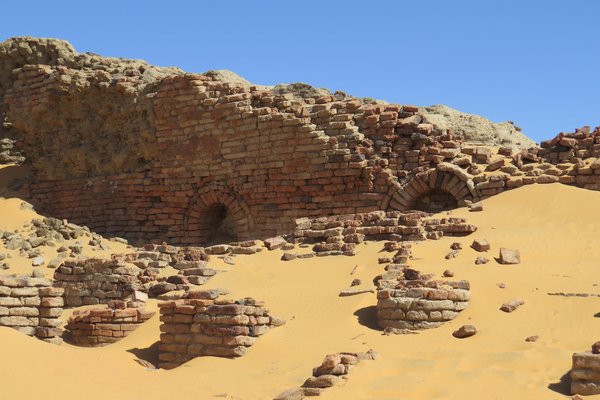Sudan
Old Dongola
Site Info
Official Information
- Full Name
- Old Dongola (ID: 652)
- Country
- Sudan
- Status
-
On tentative list 1994
Site history
History of Old Dongola
- 1994: Added to Tentative List
- Added to tentative list
- Type
- Cultural
- Criteria
Links
- UNESCO
- whc.unesco.org
- Related
-
- naukawpolsce.pap.pl — Medieval tower and paintings discovered by Polish archaeologists in Sudan (03.07.2013)
All Links
UNESCO.org
- whc.unesco.org — whc.unesco.org
Related Resources
- naukawpolsce.pap.pl — Medieval tower and paintings discovered by Polish archaeologists in Sudan (03.07.2013)
News Article
- May 19, 2016 scienceinpoland.pap.pl — Polish archaeologists discovered dozens of paintings in Old Dongola
Community Information
- Community Category
- Archaeological site: Civilizations of Sub-Saharan Africa
Travel Information
Recent Connections
News
- scienceinpoland.pap.pl 05/19/2016
- Polish archaeologists discovered d…
Community Reviews
Show full reviews
The ruins of Old Dongola are located on the East Bank of the Nile. As in Egypt, the Nile provides Sudan with a narrow strip of fertile ground. This area still has a number of colourful Nubian villages, where people live of the land (beans!). However, we arrived from the desert where we had been camping.
The first remarkable sight in Old Dongola is the group of some 20 beehive tombs. These are of later date than Christian Dongola, but probably will be included in a nomination. I was pretty stunned by them, in the right sunlight they are beautiful. They are much bigger than I had expected. On the inside they are empty nowadays, except for significant numbers of bats.
The Christian archaeological site lies uphill. It covers quite a large area, with palace grounds, churches and houses. From the fourth to the fourteenth century Old Dongola was the capital of the Makurian state and an important trade city. We (a Dutch tour group of 16 people) were the only visitors on site and I noticed no entrance regulations. After a while a caretaker showed up and followed us around on the 45 minute circuit along the remains of the buildings.
Compared to Paul Tanner's photos from his visit in 2005, I found the site to be less covered with sand 9 years later. The church buildings seem to be fully excavated, but not much more is left than columns and walls. This part of the former town lies …
Keep reading 0 comments
Whilst visiting Sudan we camped at Old Dongola and, on Xmas morning 2005, were treated to a personal tour of the excavations by a Dr. Stefan Jakobielski who had been working on the site since 1965, eventually as director of a team from the Centre of Mediterranean Archaeology at Warsaw University. This CV seems to show that he retired in 2006 - http://www.zaspan.waw.pl/jakobielski
We had first visited on our own the extensive ruins of the city which had flourished between 7th and 14 centuries. Although it is situated within view of the Nile (and the ferry crossing to reach it is an interesting part of the “visit experience”) it is today partially consumed by sand and doesn’t really give the impression of an ideal location for human habitation! In its earliest years it was the capital of the Christian kingdom of Makaria and some of the columns scattered among the dunes are marked with carved crosses. Photo 1 shows the “Throne Hall” high above the site with an indication of the ruins and pillars situated around it – these include the ruins of a 7th C cruciform church. The site also contains a number of later “Qubba” or tombs from more recent Muslim times (Photo 2).
Next, as a courtesy on this Christmas day (but also with the hope of learning a bit more about the site than was immediately visible from the limited ruins poking above the sand!!) we paid a visit to the nearby HQ of the archaeologists …
Keep reading 0 comments
